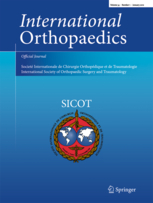
SPINE
Unilateral TLIF comparable to bilateral in two-level degenerative lumbar disorders
This report has been verified
by one or more authors of the
original publication.
Int Orthop. 2014 Jan;38(1):111-6. doi: 10.1007/s00264-013-2026-y.
68 patients with two-level degenerative lumbar disorders were randomized to receive treatment with unilateral or bilateral transforaminal lumbar interbody fusion (TLIF). Perioperative, clinical and radiographic outcomes were assessed and compared. Patients who received unilateral TLIF experienced less blood loss, shorter operative times, and had lower implant costs. Outcomes of leg and back pain, disability, health-related quality of life, radiographic fusion, and complication rate were comparable after 2 years. Results suggest unilateral TLIF as a safe and effective alternative to bilateral TLIF.
Unlock the full ACE Report
You have access to {0} free articles per month.Click below to unlock and view this {1}
Unlock NowCritical appraisals of the latest, high-impact randomized controlled trials and systematic reviews in orthopaedics
Access to OrthoEvidence podcast content, including collaborations with the Journal of Bone and Joint Surgery, interviews with internationally recognized surgeons, and roundtable discussions on orthopaedic news and topics
Subscription to The Pulse, a twice-weekly evidence-based newsletter designed to help you make better clinical decisions
Exclusive access to original content articles, including in-house systematic reviews, and articles on health research methods and hot orthopaedic topics
Or upgrade today and gain access to all OrthoEvidence content for just $1.99 per week.
Already have an account? Log in


Subscribe to "The Pulse"
Evidence-Based Orthopaedics direct to your inbox.
{0} of {1} free articles
Become an OrthoEvidence Premium Member. Expand your perspective with high-quality evidence.
Upgrade Now













































































